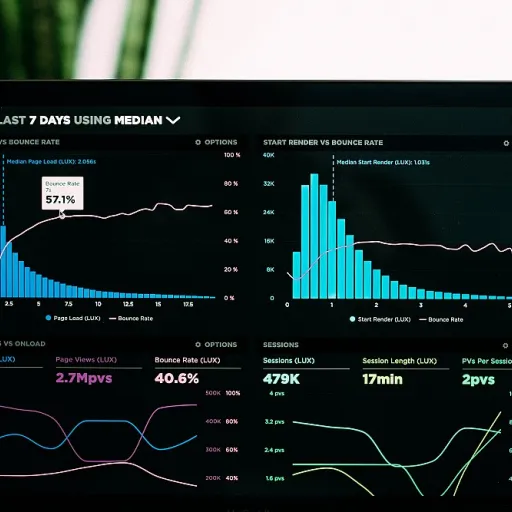
Understanding the role of landing pages in business idea validation
Why landing pages matter for business validation
Landing pages are essential tools for entrepreneurs and teams aiming to validate a new business idea. They serve as focused web destinations designed to capture the attention of a target audience, present a product or service, and encourage visitors to take a specific action. Whether the goal is to collect leads, gauge interest, or test messaging, landing pages provide a low-risk, data-driven way to understand what people want and how they respond to your offer.
Key objectives and metrics for landing page validation
When using landing pages for business idea validation, the main objectives are to:
- Measure demand for a product or service by tracking engagement metrics such as click-through rates, sign-ups, or downloads
- Identify potential buyers and customers gathering information about their needs and preferences
- Test different value propositions, content, and calls to action to see which resonates best with the relevant industry audience
- Collect feedback from people showing interest, helping teams refine their ideas before investing heavily in development
Channels and tools for reaching your audience
To drive traffic to these landing pages, businesses often leverage social media platforms like LinkedIn, group discussions, and targeted ads. Tools that track engagement metrics, such as follow rate or conversion rate, help teams understand how well their landing page is performing. Social signals and direct feedback from users can reveal how well the page is connecting with its intended audience.
Connecting landing pages with broader digital strategies
Landing pages are not isolated assets. They are part of a larger digital ecosystem that includes content marketing, SEO, and social media engagement. For example, integrating landing pages with LinkedIn campaigns or using insights from social media can help refine your approach and reach the right people. Teams that understand how to use these channels and tools will be better equipped to validate their ideas and make data-driven decisions.
For those interested in how artificial intelligence can further enhance landing page validation and support global reach, exploring AI-driven multilingual SEO strategies can provide additional insights.
How artificial intelligence enhances landing page optimization
AI-driven Personalization for Landing Pages
Artificial intelligence is transforming how landing pages connect with their target audience. By analyzing engagement metrics and social media signals, AI tools can identify what content resonates most with potential buyers. This allows businesses to tailor their landing pages, ensuring that people showing interest in a product or service see the most relevant information. For example, AI can segment visitors based on their behavior, such as follow rate on LinkedIn or interactions with a group, and dynamically adjust the content to match their needs. This approach helps teams increase leads and improve the rate at which customers gather information about the product.
Optimizing Content with AI Insights
AI-powered platforms can analyze large volumes of data from sources like LinkedIn, social media, and relevant industry reports. These insights help teams understand what their target audience is searching for and how they engage with similar products. By leveraging this data, businesses can refine their landing page content to address the specific questions and concerns of potential buyers. AI can also suggest keywords and phrases, such as "wie konnen sie ihre leads steigern" or "wie sie ihre sales verbessern," making the content more discoverable for people searching in different languages or regions.
Automated Testing and Continuous Improvement
One of the most impactful ways AI enhances landing page optimization is through automated A/B testing. AI tools can rapidly test different headlines, calls to action, and layouts to determine which combinations drive the highest engagement and conversion rates. This process is much faster and more insightful than traditional manual testing. Teams can use these findings to make data-driven decisions, ensuring that their landing pages are always aligned with the needs of their audience and the goals of their product or service.
Real-World Application: Smarter Search Engine Optimisation
For a deeper look at how AI is being used in practice, consider the strategies shared in this report on smarter search engine optimisation. It highlights how AI tools help teams identify the most effective content, track engagement metrics, and adjust landing pages to increase leads and sales. By integrating AI into their SEO and content strategies, businesses can ensure their landing pages remain competitive in a rapidly evolving digital landscape.
SEO strategies for landing pages using artificial intelligence
AI-Powered Keyword Research and Content Optimization
Artificial intelligence is transforming how landing pages are optimized for search engines. By analyzing engagement metrics and social signals from platforms like LinkedIn and other social media, AI tools can identify what content resonates with your target audience. This helps teams create landing pages that not only attract visitors but also convert potential buyers showing interest in your product or service.
- Keyword Discovery: AI tools scan relevant industry data, social conversations, and competitor landing pages to suggest keywords with high search intent. This ensures your landing page content aligns with what people are searching for, increasing the chances of capturing leads.
- Content Personalization: Machine learning models analyze user behavior, such as follow rate and engagement metrics, to recommend personalized content blocks. This approach helps teams deliver messages that speak directly to the needs of their target audience, improving conversion rates.
- SEO Copywriting: AI-driven platforms generate and refine headlines, calls-to-action, and product descriptions. They consider factors like readability, keyword density, and semantic relevance, making it easier for your landing page to rank higher in search results.
Automated A/B Testing and Performance Reporting
AI simplifies the process of testing different landing page elements. By automatically running A/B tests and analyzing results, these tools help teams understand which variations drive more leads and sales. Reports generated by AI highlight what works and what needs improvement, allowing for data-driven decisions.
- Insightful Reports: AI platforms provide detailed reports on user interactions, such as how many people engage with your content or how many leads are generated from specific landing pages. This information is crucial for refining your SEO strategies and ensuring your product or service stands out.
- Continuous Optimization: With real-time data, AI tools adjust landing page elements to maximize performance. This means your team can respond quickly to changes in user behavior or search trends, keeping your landing page relevant and competitive.
Integrating Social and Industry Signals
Modern AI tools gather data from social media, industry reports, and group discussions to inform SEO strategies. By understanding what topics are trending and what potential buyers are discussing, you can tailor your landing page content to address their needs and questions. This approach increases the chances that your landing page will be discovered by those actively seeking solutions like yours.
For a deeper look at how marketing channels can impact your landing page SEO, check out this analysis of marketing channels used by Ergodyne.
Real-world examples of landing pages for business idea validation
Landing Pages That Attract and Convert: Real-World Insights
When businesses set out to validate a new product or service, landing pages become a critical tool for measuring interest and gathering feedback. AI-powered landing pages are now widely used to optimize content, layout, and targeting, helping teams quickly understand what resonates with their target audience. Here are some practical examples and what makes them effective:- Tailored Messaging for Potential Buyers
Companies in the B2B sector often use AI to analyze engagement metrics from their landing pages. By monitoring which headlines, calls-to-action, and product descriptions generate the highest follow rate or lead conversions, teams can refine their content to better address the needs of their relevant industry. For example, a SaaS startup might test different value propositions to see which one drives more people to sign up for a demo or download a report. - Dynamic Personalization Based on Social Data
Some businesses integrate AI tools that pull insights from social media platforms like LinkedIn. By understanding the job titles, group memberships, and interests of visitors, landing pages can dynamically adjust content to speak directly to the concerns of decision-makers or team leads. This approach helps increase engagement and shows potential buyers that the product or service is tailored for their specific needs. - Rapid Validation Through A/B Testing
AI-driven A/B testing allows companies to quickly compare different versions of a landing page. For instance, an e-commerce brand might test variations in product images, testimonials, or sales copy to see which version leads to more people showing interest or making a purchase. The AI analyzes the results in real time, helping teams make data-backed decisions und die Conversion Rate steigern. - Lead Qualification and Segmentation
Using AI, landing pages can segment leads based on how visitors interact with the content. For example, if a visitor spends more time reading about a specific feature, the system can tag them as a high-potential lead for that aspect of the product. This helps sales teams prioritize outreach and tailor their approach, increasing the chances of converting leads into customers.
| Landing Page Feature | AI Application | Impact on Validation |
|---|---|---|
| Personalized Content | Analyzes user data from LinkedIn and social media | Improves relevance for target audience |
| Real-Time A/B Testing | Optimizes layout and messaging automatically | Boosts engagement metrics and conversion rate |
| Lead Scoring | Segments visitors based on behavior | Helps sales teams focus on high-quality leads |
| Automated Reporting | Generates insightful reports on user activity | Enables teams to iterate quickly and validate ideas |
Common challenges in AI-driven SEO for landing pages
Challenges in AI-Powered SEO for Landing Pages
While artificial intelligence offers powerful tools for optimizing landing pages, several challenges can arise when applying AI-driven SEO strategies. Understanding these obstacles helps teams and individuals make informed decisions and avoid common pitfalls.
- Data Quality and Relevance: AI models depend on high-quality, relevant data to deliver accurate insights. Inconsistent or outdated content can lead to misleading recommendations, affecting how well your landing page attracts potential buyers or customers gather information.
- Alignment with Target Audience: AI tools may suggest optimizations that don’t always align with the preferences of your specific target audience. Engagement metrics from social media or platforms like LinkedIn can help, but interpreting these signals for your product or service requires human oversight.
- Over-Optimization Risks: Relying too heavily on AI-generated keywords or content can result in unnatural language, which may reduce the follow rate or engagement metrics. Search engines increasingly value authentic, insightful content that resonates with people, not just algorithms.
- Integration with Existing Tools: Teams often use a mix of SEO tools, analytics platforms, and social media channels. Ensuring that AI solutions work seamlessly with these systems can be complex, especially for group collaboration or when tracking leads and sales performance.
- Transparency and Trust: AI recommendations can sometimes lack transparency, making it difficult for teams to understand why certain changes are suggested. This can impact trust in the process, especially when reporting results to stakeholders or the relevant industry group.
Common Pitfalls When Using AI for SEO
Some frequent mistakes include:
- Ignoring the need for regular updates to AI models as search engine algorithms and user behavior evolve.
- Focusing solely on technical SEO, while neglecting the importance of social signals and showing interest from real people on platforms like LinkedIn or other social media.
- Failing to adapt AI-generated content to the unique voice and value proposition of your product or service, which can reduce the rate at which leads become customers.
Teams that address these challenges and pitfalls are better positioned to create landing pages that not only rank well but also resonate with their audience, driving meaningful engagement and sales. In diesem Artikel, we’ve explored how AI and SEO can work together, but being aware of these challenges is key to sustainable success.
Best practices for combining AI and SEO in landing page validation
Aligning AI Insights with Human Expertise
When combining artificial intelligence with search engine optimisation for landing page validation, it is essential to balance automated insights with the expertise of your team. AI tools can process engagement metrics, analyse social media signals, and identify patterns in how people interact with your content. However, the final decisions about messaging, design, and calls-to-action should reflect the knowledge of your group and their understanding of the target audience. This approach ensures that the landing page resonates with potential buyers and customers gather meaningful feedback on the product or service.
Data-Driven Content Optimisation
AI-powered tools can help you refine landing page content by analysing what drives leads, sales, and showing interest from visitors. Use these tools to:
- Monitor engagement metrics such as follow rate and conversion rate
- Identify keywords and phrases relevant to your industry and target audience
- Test variations of headlines, calls-to-action, and visuals to see wie sie ihre landing page performance verbessern können
By leveraging these insights, your team can create more relevant and persuasive content that speaks directly to the needs of potential buyers.
Continuous Learning and Adaptation
AI-driven SEO is not a one-time effort. The most effective teams regularly review reports generated by AI tools, track changes in social signals, and adapt their strategies based on what works. For example, if engagement metrics from LinkedIn or other social media platforms indicate that certain messages resonate with a specific group, adjust your landing page content accordingly. This ongoing process helps ensure that your landing page remains relevant und die Conversion-Rate steigt.
Collaboration Across Teams
Successful integration of AI and SEO requires collaboration between content creators, SEO specialists, and product managers. Each brings a unique perspective on how to reach the target audience and validate the business idea. Encourage open communication so that insights from AI tools are shared and acted upon. This team approach helps you understand wie sie das Beste aus ihren Tools herausholen können und wie sie ihre Ziele schneller erreichen.
Ethical Use of AI and Data
Finally, always consider the ethical implications of using AI for landing page optimisation. Be transparent about data collection, respect user privacy, and ensure that your content provides real value to visitors. This builds trust with your audience and strengthens your authority in the relevant industry.













